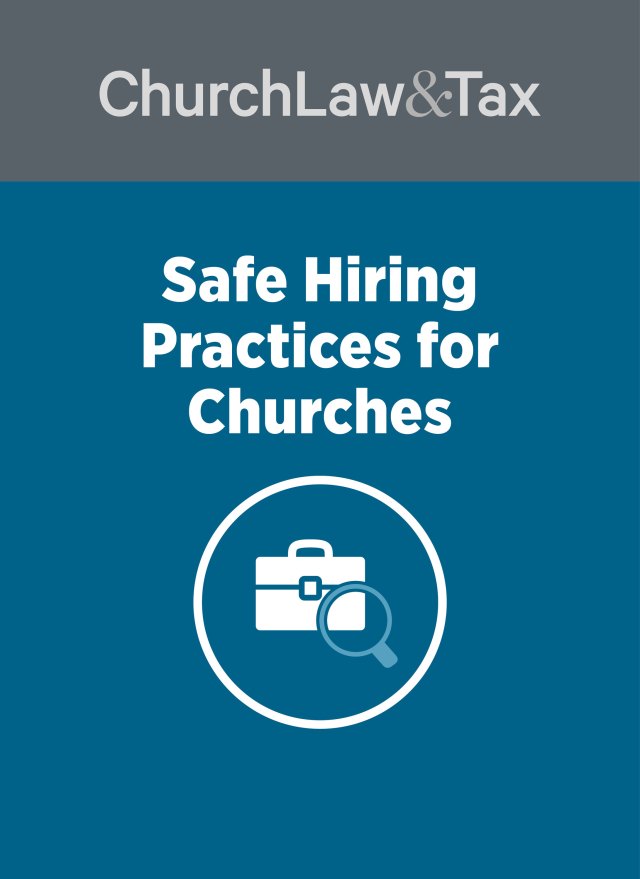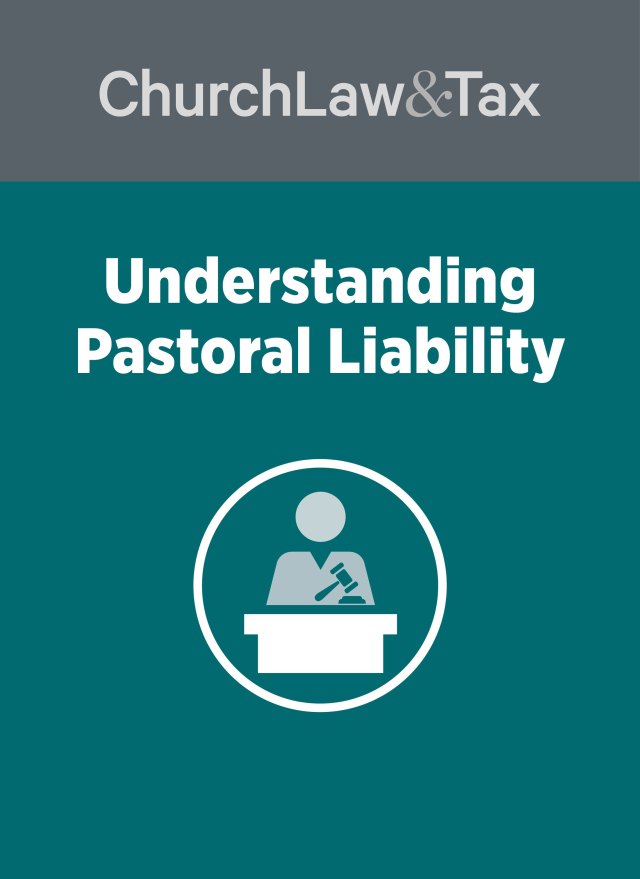• Key point 10-04. A church may be liable on the basis of negligent selection for a worker’s molestation of a minor if the church was negligent in the selection of the worker. Negligence means a failure to exercise reasonable care, and so negligent selection refers to a failure to exercise reasonable care in the selection of the worker. Liability based on negligent selection may be imposed upon a church for the acts of employees and volunteers.
A California court ruled that a school was legally responsible for a teacher’s acts of child molestation, but that a jury erred in finding the school to be 100 percent at fault. The teacher in question had been accused of inappropriate behavior with female students on previous occasions. In 1975, shortly after graduating from college and while serving as a teaching intern at an elementary school, he was accused of fondling four young girls. Criminal charges were brought against him on four counts of felony child molestation. He was suspended from his teaching position and placed on administrative leave while the criminal charges were being investigated. Though eight girls testified against the teacher at his trial, a jury acquitted him on all four counts. Following his acquittal, the teacher returned to teaching duties, and eventually became a fully credentialed, full-time teacher at middle school.
There were no further complaints or accusations concerning the teacher until 1979. At that time, a female student and her parents complained to three school administrators, who met with and reprimanded the teacher. One of the administrators later disclosed that the teacher had used inappropriate “terms of endearment” to female students and had touched some of them inappropriately during after-school athletic events. He stated that he warned the teacher and issued him a memo emphasizing that even “trivial matters” would be taken seriously. The teacher later testified that the incident involved his touching a girl’s breast, but he asserted that the school “solved” the problem by transferring the girl to another classroom.
In 1986, a 12-year-old girl (“Mona”) went to the teacher’s office to buy a pep-club T-shirts for a school fundraiser. While they were talking, the teacher turned off the lights, walked up to the girl, slid his hand under her sweater, and touched her breast for about 30 seconds. The girl broke away and ran out of the room, in shock. The girl later told some friends about the teacher’s behavior. Word spread around school quickly. The principal questioned the girl, and then immediately reported the incident to both child protective services and the sheriff’s office. Later that day the girl was questioned by police in the presence of her parents. Several weeks later, under pressure from her parents, the girl recanted her story. The teacher sued the family for defamation. At the trial, the girl admitted that the story was not true. A jury awarded the teacher $50,000 in damages. The teacher was returned to the classroom, without restrictions. A year later he began molesting another 12-year-old girl (“Vicki”) who was a popular student in one of his English classes. Over the course of a year the teacher frequently was alone with the girl, and often drove her to or from school functions. He kissed, hugged, and fondled her on numerous occasions. Vicki went to another school in ninth grade, and never saw the teacher again. During her ninth grade year, Vicki suffered both emotionally and physically as a result of the teacher’s behavior. When she was a high school senior, she filed criminal charges against the teacher. He pled “no contest,” served a 5-month prison term, and was forced to surrender his teaching credentials.
The two victims sued the school, claiming that it had been negligent in its hiring, retention, and supervision of the teacher. A jury agreed, finding the school to have been 100 percent at fault. It awarded damages of $4.3 million. The school appealed, arguing that the jury erred in assigning none of the fault to the teacher. It also argued that the jury verdict was excessive.
Degree of Fault
Under the principle of “comparative negligence,” a jury verdict against a defendant ordinarily is allowed only to the extent of the defendant’s fault. If a jury awards a plaintiff $100,000, and also finds that the defendant was 75 percent at fault, then the defendant will be required to pay only $75,000. Was it possible that the school was 100 percent responsible for the two victims’ injuries? No, concluded the appeals court. It noted that the school’s negligence (in selecting, retaining, and supervising the teacher) “would not, and could not, have caused any injury to [the victims] but for [the teacher’s] act of sexual molestation. [The teacher] was the actor; the [school] was the facilitator. It took the two together to cause [the victims’] injuries.”
The court made an interesting observation that will be useful to churches that are sued on account of the sexual misconduct of employees. It noted that if the school was 100 percent at fault, then this necessarily meant that the teacher bore no fault at all. And, if the teacher bore no fault, then the school could not liable for negligence in selecting, retaining, or supervising him. The court sent the base back to the trial court and ordered it to allocate fault between the teacher and school.
Reasonableness of the Verdict
The school also argued on appeal that the jury verdict of $4.3 million was excessive. In commenting on Mona’s damages, the court observed:
Mona’s pain and suffering as a result of the affair was well documented at trial. She was rejected by her friends, family, and school officials. No one believed her. When she reported the incident to the principal, he put her into a room with windows where her fellow students could stare at her. For a shy, insecure, unsophisticated 12-year old girl, this experience was traumatic. Then [the teacher] sued her for defamation and the school intervened in that action. She spent most of her high school years in her bedroom, with eating disorders, refusing to communicate with her parents or anyone else. She had no friends at all. Her appearance changed, she was angry, resentful, alienated from society. Her parents blamed her for the lawsuit, and her once-close relationship with her father was destroyed. For years, her tale followed her wherever she went: she was the girl who had leveled the “false charges” against a beloved, dedicated teacher. As a result, she changed schools often.
Application. There are a number of aspects to this decision that should be noted by church leaders, including the following:
(1) Handling prior allegations of misconduct. The court determined that the school had been negligent in hiring the teacher because of the two previous incidents. The first incident involved a criminal prosecution of the teacher for molesting four girls. The court considered this background relevant despite the fact that the teacher had been acquitted on all four charges. The second incident involved the teacher’s one-time touching of a female student’s breast. The court concluded that the school had been negligent in hiring the teacher despite these previous incidents. This is an important ruling. It demonstrates that negligence can be based on (1) criminal charges ending in acquittals, or (2) a one-time, momentary act of sexually touching a minor. This case demonstrates the difficulty faced by church and school leaders in making hiring decisions involving persons with some evidence of wrongdoing in their background. Fortunately, a new federal law provides a possible solution. The Volunteers for Children Act (addressed in a feature article in the September-October 1999 issue of this newsletter) allows church leaders to obtain an FBI criminal records check on an individual through a designated state agency upon submitting an application form with ten sets of fingerprints. The FBI reports the individual’s criminal record, if any, to the state agency, which in turn informs the church whether or not the person is suitable for working with minors. This procedure can relieve church leaders of the oftentimes agonizing decision of evaluating the relevance of ambiguous information including unproven accusations, acquittals, convictions for sexual offenses that are many years old, and convictions for non-sexual offenses.
(2) Nature of the molestation. Mona was awarded $1.5 million for her “non-economic” injuries associated with a 30-second incident of fondling. Vicky was awarded nearly $3 million for repeated acts of kissing and hugging. Church leaders should not take such acts lightly, or assume that they cannot result in substantial damages.
(3) Allocation of fault. The court concluded that the school could not have been 100 percent at fault. That is a reassuring if self-evident conclusion, since the teacher himself was mostly to blame for the victims’ injuries. But plaintiffs’ attorneys do their best to diminish the fault of sex offenders, since in many states the damages that can be allocated to a school or church must be reduced by the molester’s degree of fault as determined by the jury.
(4) Amount of damages. The damages assessed against the school were substantial. Church leaders should understand that if similar incidents of misconduct occur in their church, they will face the possibility of a large jury verdict in favor of the victim which may exceed available insurance coverage. This should be ample motivation to implement an appropriate screening program for all paid and volunteer youth workers. If your church has not implemented such a program, you should do so immediately. If you have done so, now would be a good time to review your procedures and policies to be sure that they are being followed by church staff. Ortega v. Pajaro Valley Unified School District, 75 Cal.Rptr.2d 777 (Cal. App. 1998). Negligence as a Basis for Liability
© Copyright 2000 by Church Law & Tax Report. All rights reserved. This publication is designed to provide accurate and authoritative information in regard to the subject matter covered. It is provided with the understanding that the publisher is not engaged in rendering legal, accounting, or other professional service. If legal advice or other expert assistance is required, the services of a competent professional person should be sought. Church Law & Tax Report, PO Box 1098, Matthews, NC 28106. Reference Code: m65 m67 m10 c0200



